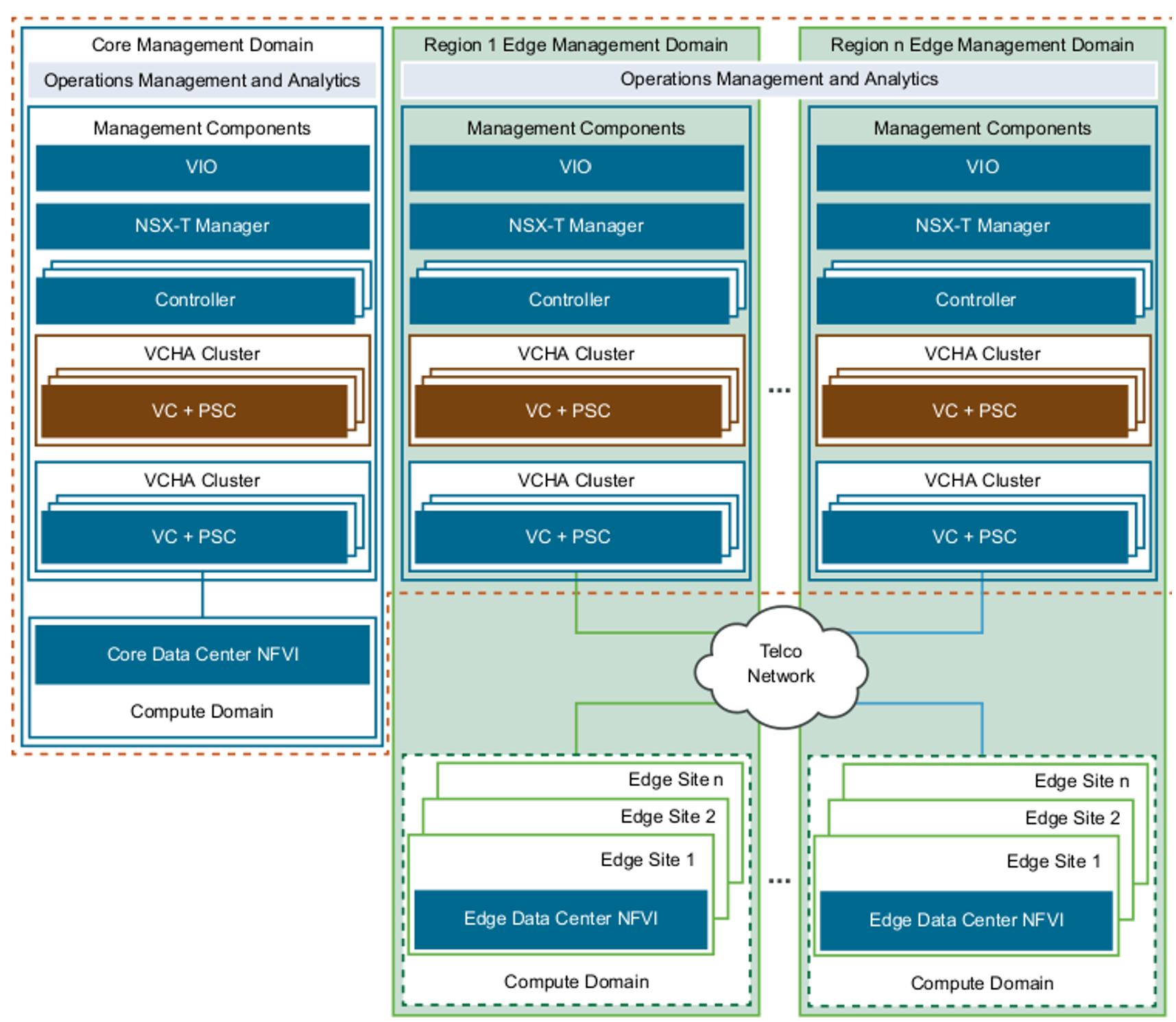Within VMware vCloud Director, a unit of tenancy is called a tenant virtual data center (vDC) within the scope of a project. It is defined as a composition of dedicated compute, storage, and network resources and as workloads. A tenant vDC allows the creation of virtual data centers for tenants under different compute nodes that offer SLA levels for each telco workload. While quotas on projects set limits on the resources, tenant vDCs let you set resource guarantees for tenants and avoid noisy neighbor scenarios in a multi-tenant environment.
A tenant vDC is a composition of dedicated compute, storage, and network resources and workloads. The tenant is associated with a set of operational policies and SLAs. The tenant vDC can be bound to a single tenant or shared across multiple tenants. Services such as HSS and DNS are examples of shared tenancy. To avoid contention and starvation, compute, storage, and network isolation policies and QoS policies can be applied consistently to the workloads.
To meet the operational policies and SLAs for workloads, closed-loop automation is necessary across the shared cloud infrastructure.
VMware Telco Cloud Infrastructure OpenStack Edition uses vSphere DRS and Nova Scheduler to optimize the initial and runtime placement of workloads and to ensure the health and performance of the infrastructure. Tenant vDCs and workloads are monitored to ensure that the resources are tuned and balanced dynamically.
Platform Services Controller (PCS) manages authentication and access control for administrators and applications that interact with the vSphere platform. PCS works across a telco network with a core management domain and multiple edge domains.
